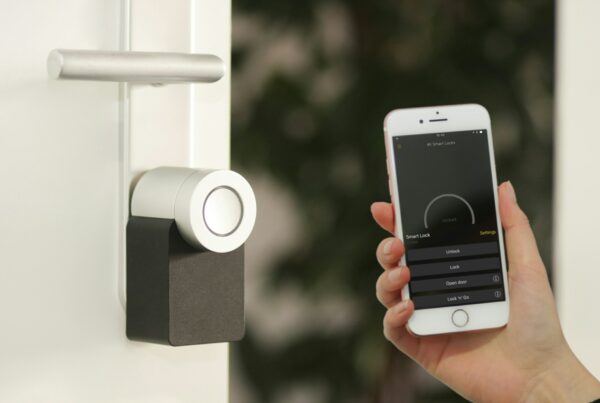Last Updated on December 23, 2023
Recessed lighting is a great way to give your living room a modern look. But how do you place them to get the best results? This article will help you figure out the best placement of recessed lighting in your living room.
Start by considering your living space’s layout. Identify areas that need more light. Commonly, recessed lights are placed above seating areas, entertainment centers, and art displays. This adds visual interest and depth to your living room.
Think about the atmosphere you want to create. Recessed lights can be used for task-oriented activities or general ambiance. Put them above dining tables or workspaces for focused illumination. Use dimmable lights to adjust the brightness in your room.
Remember to consider any existing wiring or structural constraints. It’s a good idea to consult a professional electrician. They’ll make sure your lighting installation is up to code.
Interior design experts say recessed lighting can revamp your living room. Plan their placement to get the most out of them.
Understanding Recessed Lighting
Recessed lighting – sleeker and more modern – can add to any living room’s look. It gives both ambient and functional light, making the room more pleasant. Here are some elements to think about when installing recessed lights:
- Placement – Position the lights to brighten the room evenly.
- Spacing – Decide the distance between each light fixture.
- Size – Choose the size of the recessed lights according to your tastes.
- Beam Angle – Pick the beam angle for proper coverage.
- Dimming Options – Get dimming capabilities for more flexibility.
Also, don’t put the recessed lights too close to walls or furniture, as it can cause shadows and uneven lighting. Taking into account the room’s height and ceiling type will help work out the right mounting options.
Surprising fact: Research from Rensselaer Polytechnic Institute’s Lighting Research Center shows that good lighting systems can boost moods and productivity in residential areas.
Factors to Consider
Make sure you plan the recessed lighting in your living room just right to make it glow and inviting. Here’s what to think about:
- Ceiling height: Take into account the height of your ceiling. For high ceilings, you may need more lights.
- Room layout: Arrange furniture and consider how you use the room. This will help you decide where focused or ambient lighting is needed.
- Natural light sources: See how much natural light comes in at different times of the day. This helps you put recessed lights in places that need them.
- Task lighting needs: Identify spots for extra lighting, like reading nooks, workspaces or display areas. This can make a functional look.
- Decorative elements: Pick out any decorative pieces or architectural features you want to highlight with recessed lighting, like artwork, accent walls, or textures.
- Dimming capabilities: Install dimmable recessed lights to adjust brightness. This offers flexibility for creating different moods.
- Electrical wiring feasibility: See if there are any electrical limits that could stop installation in certain areas. Ensure safe wiring.
Don’t miss out on transforming your living room with proper recessed lighting. Carefully consider these things for a well-lit, stylish, and functional space.
Steps to Determine Placement
Want to enhance your living room’s ambiance and functionality? Follow these steps!
- Check your layout: Examine your living room’s floor plan. Identify areas that need light. Consider seating, artwork, and architectural features that could use recessed lighting.
- Pick your effect: Choose the atmosphere you’d like for your living room. Do you want cozy and intimate or bright and airy? This will help figure out how many and where to place recessed lights.
- Measure the height: Measure your ceiling height. Make sure the fixtures won’t hang too low or interfere with furniture or decor.
- Calculate the spacing: Divide the ceiling height by two. For example, if your ceiling is 8 feet high, put recessed lights 4 feet apart for even light.
- Try arrangements: Use adhesive lighting templates or virtual design tools to imagine different configurations. This will show how the light will interact with your living room.
Add dimmer switches for adjustable lighting levels. This will give your living room elegance and sophistication.
Pro Tip: Need help? Consult an experienced electrician who specializes in interior lighting design. They can ensure optimal results for your layout and preferences.
Recommended Placement Areas
For the best lighting in the living room, strategically place recessed fixtures. This will create an inviting atmosphere and make the room more functional. Below is a guide to recommended areas:
- Ceiling near seating: Put recessed lights above the main sitting area. This will provide illumination for reading or talking with others.
- Around the edges: Place lights along the edges of the ceiling. This will bring warmth throughout the room.
- Accent Artwork: Use recessed lighting to show off artwork or decorative elements. This adds depth and interest.
- Dark corners: Illuminate dark corners with discreetly placed lights. This will banish shadows and make the lighting scheme even.
- Unique details: Architectural features or furniture placement may need special consideration. This will give an even distribution of light in all areas of the living room.
One homeowner had a bookcase against one wall. This caused shadows in the area. They put recessed lights above the bookcase and lit up the collection. This eliminated any dark spots in the corner.
To sum it up, the right placement of recessed lighting can make the living room inviting. Use these tips and adjust them based on your own living space. This will create an ambiance that suits your style and provide enough illumination for activities.
Installation Process
Installing recessed lighting in the living room? Here’s a guide to help you!
- First, decide on placement: Identify spots in the living room for recessed lights. Consider room layout, furniture arrangement, and desired lighting effects.
- Measure and mark: Measure up each recessed light fixture, then mark the measurements on the ceiling with a pencil.
- Cut out holes: Cut out the marked holes with a hole saw or reciprocating saw. Be careful not to damage electrical wiring or structural components.
- Connect wiring: If no wiring exists, consult an electrician to wire them correctly. Follow safety guidelines and regulations.
- Install fixtures: Place fixtures into their corresponding hole, following the manufacturer’s instructions. Secure them properly.
For extra details, consider bulb types, wattages, dimmer switches for brightness levels, and insulation around fixtures.
Pro Tip: To get optimal illumination, experiment with angles and positions of recessed lights before finalizing placement. This will help create a balanced lighting scheme.
Tips for Optimal Lighting
For an optimal living room, prioritize natural light sources. Windows and skylights can create a bright and airy atmosphere. Add a mix of general, task, and accent lighting for different activities. Use dimmers or adjustable fixtures to control the intensity for specific moods. Strategically place recessed lights for specific tasks such as above a reading nook. Research shows that proper lighting can improve mood and productivity. Home Lighting Tips magazine confirms this.
Conclusion
When it comes to lighting a living room, placement is crucial. After assessing factors such as room layout, ceiling height and furniture, good positioning of recessed lights can add to the overall ambience.
To avoid shadows or glare, it’s important to space lights evenly. Plus, consider emphasising key areas such as seating, artwork or architectural features for added depth.
For flexibility, dimmer switches can be used to control the lighting intensity. Combining accent lighting with general ambient lighting also creates balance.
LEDs are recommended for their energy efficiency and longevity. 2700K-3000K warm or soft white bulbs are best for a cozy feel.
Interesting fact: Lighting Research Center at Rensselaer Polytechnic Institute in New York found that good lighting design has positive effects on mood and productivity.
Additional Resources and References
Researching recessed lighting for your living room? Get access to extra resources! Here’re some useful sources:
- Home improvement magazines – Look for articles on recessed lighting in the living room.
- Online forums and communities – Chat with homeowners who’ve installed recessed lighting in their living room.
- Lighting manufacturers’ websites – Get info about different types of recessed lighting fixtures and how to use them.
- Interior design blogs – Read up on tips, tricks, and design ideas.
Remember, every living room is unique. So get multiple perspectives and recommendations.
Pro Tip: Consult a pro electrician or an interior designer to get aesthetic and functional requirements sorted.


